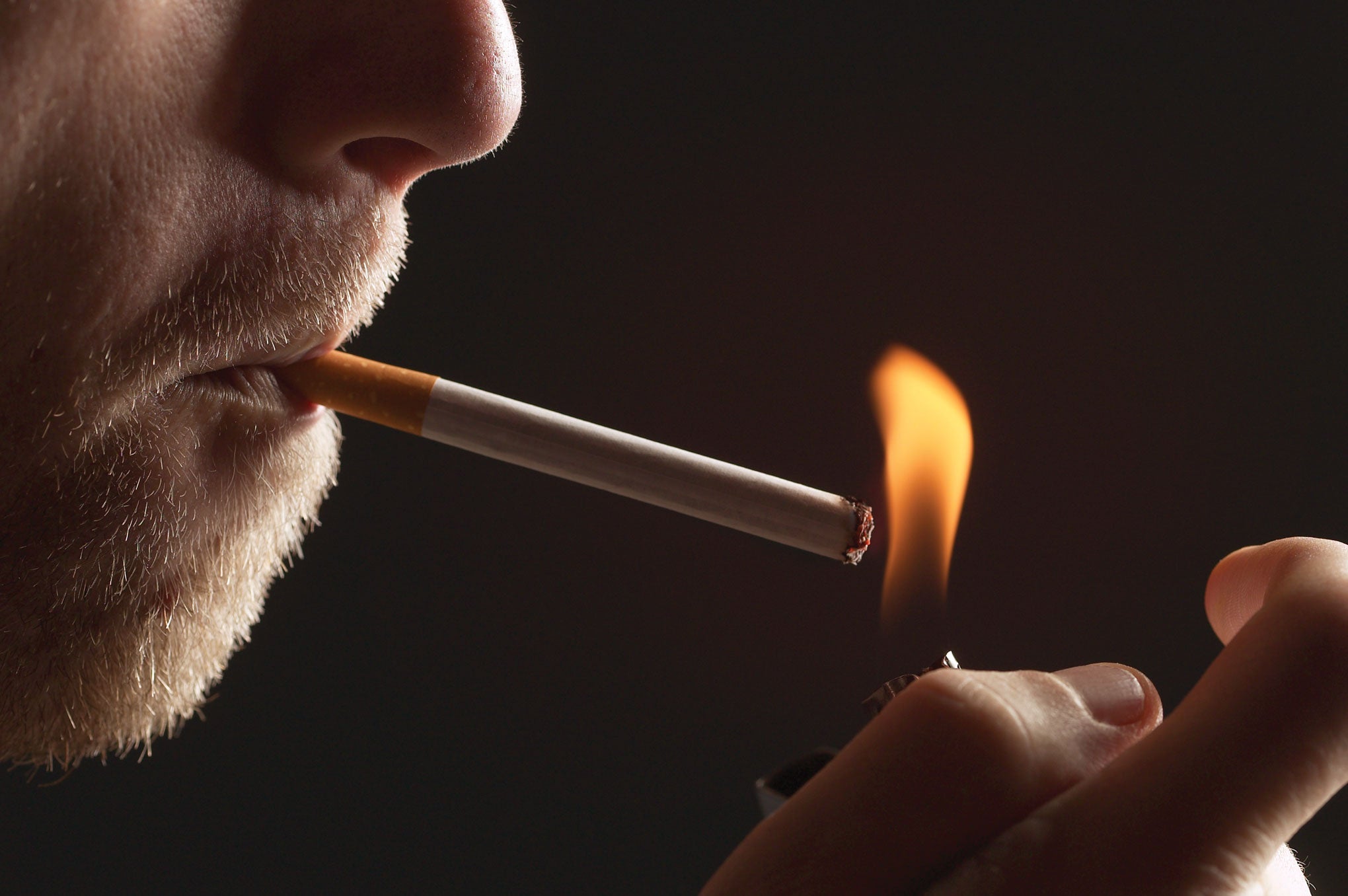Groups say $1 cigarette tax hike will save lives
Published 12:31 pm Monday, March 19, 2018
In a state where 1 in 4 smoke, could a $1 tax increase on cigarettes save thousands of lives?
Although Kentucky has some of the highest rates of smoking, smoking-related illnesses and smoking-related deaths, the legislature is still mulling a proposed tax increase that advocates argue will curb these negative health trends.
The Foundation for a Healthy Kentucky is working to push a bill in this General Assembly session that would increase Kentucky’s cigarette tax by $1. The Foundation argues there is clear evidence increases of this amount have had positive health impacts in other states.
The state tax increased to 60 cents per pack of cigarettes in April 2009, ranking Kentucky 43rd in the U.S. for its tax rate.
Ben Chandler, president and chief executive officer of the Foundation, said his agency is advocating for this tax because of the state’s terrible health trends related to smoking.
“We start with the notion that we lead the country in cancer rates, and a full third of our cancer cases in Kentucky are attributable to smoking,” Chandler said in a phone interview Thursday. “That suggests a third of our cancer cases in Kentucky are preventable. We believe leading the country in cancer rates and cancer mortality rates because of smoking is utterly unacceptable.
“And we want to do everything we can do to get that number down.”
The cost of smoking
Beside the harrowing statistics surrounding the Commonwealth’s cancer rates, there are other negative smoking-related health trends in the state.
“We know one of the reasons we lead the country in cancer is we also lead the country in smoking,” Chandler said.
According to the Centers for Disease Control, 24.5 percent of adults in Kentucky report being current smokers.
Chandler said that’s the second highest rate in the country (behind only West Virginia with about 26.7 percent of adults smoking) and 62 percent above the national average.
Clark County’s rates are a bit higher than the state with about 29 percent of adults reporting smoking in 2016.
Chandler, who spent nine years as U.S. Representative for Kentucky’s 6th District and eight years as Kentucky’s Attorney General, said approximately 9,000 deaths each year in Kentucky are attributable to smoking.
“When we compare that to the highest figure we’ve ever had for drug overdose deaths, which was last year, that number was 1,400,” Chandler said. “We are all up in arms over the opioid crisis, and we should be, I don’t want to diminish that in any way, but comparing those numbers puts into perspective how huge our smoking problem is.
“In fact, smoking is attributed to more deaths than overdoses, gun violence, murders, suicides and automobile accidents combined each year in our state.”
And while the rates are high among adults, they are also high among teens and the effects extend to even unborn babies.
Kentucky has the second highest rate in the nation of high schoolers who smoke, according to the Coalition for a Smoke Free Tomorrow. In the U.S., 11 percent of high schoolers smoke on average. In Kentucky, that rate jumps to 17 percent, and 2,900 Kentucky children become new daily smokers each year.
According to the Coalition, 119,000 Kentucky children will die prematurely in adulthood from smoking if those rates are not reduced.
Infographics released by the Coalition argue, “In order to give all children the chance to grow up health, we need to take steps to protect them from the harmful effects of tobacco use and smoking. A tobacco tax increase of $1 is proven to prevent teens from starting to smoke and supports a healthy future for Kentucky kids. An increase in the tax by at least $1 would prevent an estimated 23,200 Kentucky youth from becoming adult smokers.”
The infographics also reveal National Center for Health Statistics data about the high rates of smoking while pregnant in Kentucky.
Kentucky has the second highest rate in the nation of births to mothers who smoked during pregnancy at 20 percent. West Virginia leads the nation with the highest rate.
According to a 2016 Centers for Disease Control study, one in 14 American women who gave birth that year smoked during pregnancy.
“Smoking during pregnancy is the single most important known cause of low birth weight and increases the risk of pre-term birth and Sudden Unexplained Infant Death Syndrome,” the coalition states. “Kentucky is 46th in pre-term births, 42nd in low-birthweight births and 36th in SUIDS-related deaths.”
Beyond the physical aspects of smoking, there are extreme economic impacts as well.
According to the Truth Initiative, an organization dedicated to preventing smoking, in fiscal year 2017, Kentucky allocated $2.4 million in state funds to tobacco prevention, which is 4.2 percent of the CDC’s annual spending target.
The health care costs directly caused by smoking in Kentucky amounts to about $1.92 billion annually, and the state loses about $2.79 billion in productivity each year because of smoking.
Chandler said every household in Kentucky pays about $1,200 per year to fund health care related to smoking, “even if they or someone else in their household are not smokers.”
Tobacco country
and culture
Chandler said much of the issue with smoking in Kentucky falls back on a centuries-old tobacco culture.
“We have grown tobacco in this state for a long time,” he said. “My own family grew tobacco, so much like many other Kentuckians, we have been associated with tobacco for many years. As recently as 1992, we had 60,000 tobacco farmers in Kentucky. In my mind, that’s an incredible number.”
Chandler said Kentucky was long the second highest producer of tobacco in the U.S. and the No. 1 producer of burley tobacco.
“Since that time, the number of growers has declined to less than 4,500,” he said. “That has gone down for 275,000 acres to 75,000 acres. So tobacco production does not impact our economy as deeply as it used to.”
Yet, we still have some of the highest smoking rates, Chandler said.
“One contributing factor to that is the cost of cigarettes is lower here than other states,” he said.
The national average cigarette tax is $1.72 per pack, Chandler said.
The highest rate is in New York with $4.35 per pack and the lowest in Missouri at 17 cents per pack.
The proposed increase would set Kentucky’s rate at $1.60 per pack.
In surrounding states taxes range anywhere from 30 cents per pack in Virginia to $1.98 per pack in Illinois. The rate is 62 cents in Tennessee, $1.60 in Ohio and $1.20 in West Virginia.
Chandler and other advocates argue there is significant evidence supporting the notion that higher costs lead to lower negative health trends.
“There is a ton of evidence that makes it very clear that if you raised the tax significantly enough, you will reduce smoking rates,” Chandler said. “Research suggests if you raise the rate by $1 in Kentucky, more than 50,000 people would either quit or not start smoking.
“If you cause 50,000 people to not smoke, you cut down on deaths, cut down on cancer rates, cut down on health care costs.”
Criticism
Much of the criticism toward the proposed increase suggests it targets low-income and other vulnerable populations, including racial minorities and the LGBTQ+ community,
Chandler said his agency hopes this increase does affect these populations.
“We want them to quit smoking,” he said. “They will live longer and be healthier while they are living. They will also save enormous amount of money to be spent on more useful things.”
The average Kentucky smoker spends $1,741 each year on cigarettes, according to WalletHub, which calculates Kentucky smokers lose an additional $3,585 in income annually because of the wage gap between smokers and non smokers, the Foundation said in a news release.
“Smoking is the cause of so much illness and heartache in Kentucky, but it has far greater consequences for Kentucky experiencing racism, stigma or poverty,” Chandler said in a release in February.
Emily Beauregard, executive director of Kentucky Voices for Health, also said in the release these populations are more heavily targeted by tobacco companies and have higher rates of smoking than Kentuckians overall
“Big tobacco zeroes in on these groups because members often have less information about the health dangers of tobacco use, less access to cessation treatment and fewer social supports to help them quit successfully,” she said. “The result? They smoke at much higher rates …”
Chandler said the increase also specifically targets young people.
“National data shows very clearly that our main cohort of people who would be deterred from smoking are young people,” he said. “They are most likely to be affected because they are more likely not to start smoking at all.”
The Foundation also argues that an increase of $1 would lead to 1,180 healthier newborns every year and prevent 23,200 youth from becoming smokers. This increase would also lead to 29,400 adult smokers to quit and prevent 14,800 premature deaths, and it will save $1.07 billion over the long term in health care costs in the Commonwealth, according to the Foundation.
Cessation
Chandler said a major facet of implementing a $1 tax increase would be cessation programming. If more Kentuckians decide they can no longer afford to smoke, they will need access to program to help them quit, he said.
“People are plenty aware that smoking is harmful,” Chandler said. “But they find it difficult to quit to some extent. That’s because nicotine is a very nasty, addictive habit.
“Access to the programs will be crucial to help Kentuckians who want to stop smoking. Anyone who wants to quit, we will help them quit by making sure these programs are available and connecting them with the right people in their community.”
The CDC estimates 46.7 percent of adult every day smokers in Kentucky quit smoking one or more days in 2015.
In Clark County, Carolyn Burtner, a former health department public educator, facilitates Freedom From Smoking classes. The classes are offered through the Clark County Health Department and are a program of the American Lung Association, she said.
The 12-week classes, which will be offered again with a summer session expected in July, focus teaching people the mental and physical actions necessary to kick the habit, she said.
“It is designed where we have three weeks to prepare them to start the process of stopping and then in the fourth week, they go on the nicotine replacement,” she said. “We mentally prepare our participants for the difficult task that is quitting smoking. We ask them to explore why they are addicted, how they got addicted, what their triggers are. When they are ready to lay down the cigarettes and go on nicotine replacement, they are all prepared to deal with what happens to them as they withdrawal.”
Still, she said the top reasons she hears from participants for wanting to quit smoking are for better health and to save money.
She said the most recent increase in 2009 did not send people flooding to her class as she had expected.
“I would like to think an increase would make people seek out cessation classes, but that was not the with the increase in the last decade,” she said. “The thing is, the idea of quitting smoking is something people really want to do or think they want to do until it comes right down to it.”
Burtner said usually 20 or more pre-register for the class, but only six to eight actually show up.
“It’s a very hard thing for people to give up,” she said.
But, there is access to the programs, she said.
In Clark County, the program is free thanks to a partnership with the health department and a grant from the Clark County Agency for Substance Abuse Policy, which pays for the nicotine replacement medication. Participants are asked to only pay for their workbooks, which range from $5 to $10, she said.
The Affordable Care Act requires all Medicaid programs cover all recommended tobacco cessation medications beginning in January 2014. Kentucky does not have a private insurance mandate provision for cessation.
Passing a bill
Chandler previously said a $1 tax increase could bring an additional $266 million in revenue to the state.
A poll conducted by The Coalition for Smoke-Free Tomorrow, a group of 150 organizations advocating for the $1 increase, in December found 69 percent of registered voters in Kentucky, including some smokers support the increase. And that support rose to 73 percent when they learned over the potential health benefits.
However, pushing the increase through the legislature has proved more difficult.
Chandler said that is much in part to the power of big tobacco companies in Kentucky.
“Tobacco companies are powerful and convenience stores that sell cigarettes make a lot of money,” he said. “And there are 25 percent of population who smoke and many of them want to continue smoking.”
The Kentucky House of Representatives passed a budget bill in February that included a 50 cent increase on the cigarette tax.
Although only half of his agency’s preferred increase, Chandler admits that alone is significant in Kentucky.
“That would constitute the highest tax increase on cigarettes in Kentucky history,” he said. “And we already got that in the House budget. We don’t know what will happen in the Senate.”
However, Chandler deems himself an “eternal optimist” and remains hopeful the full $1 increase will be implemented.
“The problem is that (the legislature) continues to talk about the increase in terms of revenue,” he said. “Yes, it will bring more revenue, but it is a declining revenue source. So, it’s not good revenue policy. But it is good health policy. It is a clear and effective policy.
“That is the primary reason we are interested in this policy. We want our people to be healthier.”







